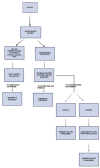Multi-Modality Imaging in Coronary Anomalies: Focus on Anomalous Aortic Origin of Coronary Arteries
- PMID: 40479037
- PMCID: PMC12143588
- DOI: 10.1111/echo.70213
Multi-Modality Imaging in Coronary Anomalies: Focus on Anomalous Aortic Origin of Coronary Arteries
Abstract
Coronary artery anomalies represent a series of congenital heart diseases characterized by the abnormal circulation of coronary arteries. Of particular interest is the anomalous aortic origin of coronary arteries (AAOCA), an underdiagnosed but potentially fatal anomaly, specifically relevant in young adult athletes. During the last decades, knowledge of the pathophysiology of AAOCA-related ischemic mechanisms has increased, and major risk conditions have been discovered. Unfortunately, a universally shared approach is still lacking, and clinicians often follow the policy of their own centers. Most of the population with AAOCA is asymptomatic or complains of minor symptoms but is among them that there is much more uncertainty about the correct strategy to perform a risk stratification process, and consequently for providing indications on exercise restriction or surgery. This review focuses on the diagnostic approach to coronary anomalies and discusses the diagnostic workflow in these patients. Finally, we perform an in-depth analysis of novel angiographic invasive functional methods and how they contribute to AAOCA in selected cases.
Keywords: angiography; coronary arteries anomalies; flow‐chart; imaging; physical activity.
© 2025 The Author(s). Echocardiography published by Wiley Periodicals LLC.
Conflict of interest statement
The authors declare no conflicts of interest.
Figures







References
-
- Lorenz E. C., Mookadam F., Mookadam M., Moustafa S., and Zehr K. J., “A Systematic Overview of Anomalous Coronary Anatomy and an Examination of the Association With Sudden Cardiac Death,” Reviews in Cardiovascular Medicine 7, no. 4 (2006): 205–213, www.medreviews.com. - PubMed
-
- Basso C., Maron B. J., Corrado D., Thiene G., and Minneapolis M., “Clinical Profile of Congenital Coronary Artery Anomalies With Origin From the Wrong Aortic Sinus Leading to Sudden Death in Young Competitive Athletes,” Journal of the American College of Cardiology 35, no. 6 (2000): 1493–1501. - PubMed
Publication types
MeSH terms
LinkOut - more resources
Full Text Sources

